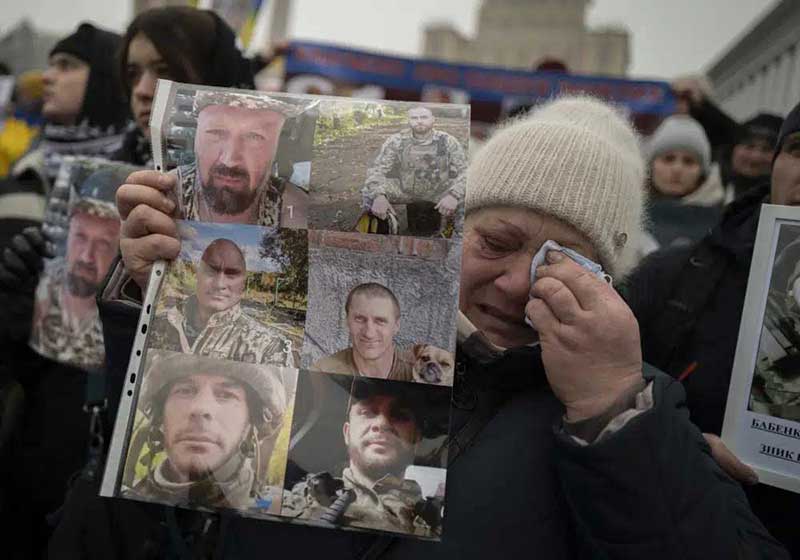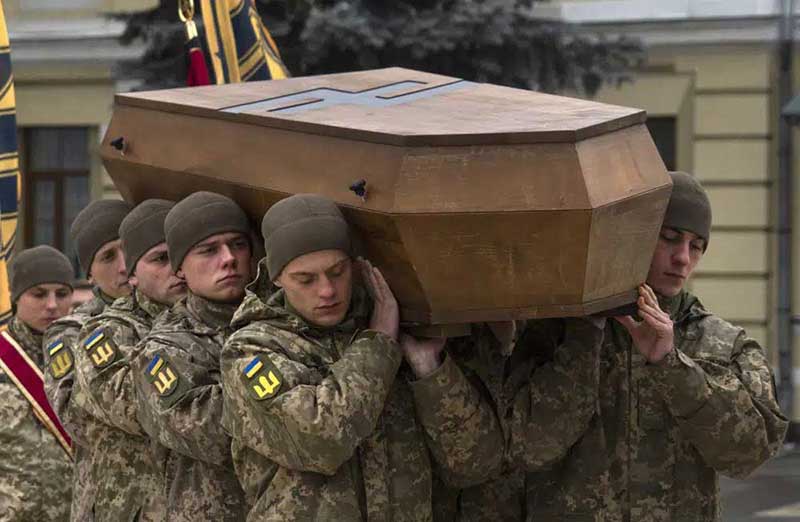The Prime Minister of the United Kingdom, Rishi Sunak, pledged on Saturday to supply Ukraine with tanks and artillery systems, amid fresh missile strikes from Moscow targeting several Ukrainian cities for the first time in nearly two weeks.
Nine people were killed and another 64 wounded in the southeastern city of Dnipro, where a Russian missile strike destroyed a section of an apartment building, said Kyrylo Tymoshenko, deputy head of Ukraine’s presidential office.
Infrastructure facilities were also hit in the western Lviv region and the Ivano-Frankivsk regions, the Odesa region on the Black Sea and the north-east of Kharkiv. Kyiv, the capital, was also targeted.
Sunak promised to supply Challenger 2 tanks and other artillery systems after speaking with Ukrainian President Volodymyr Zelenskyy on Saturday, the British leader’s Downing Street office said in a statement.

It did not say when the tanks would be delivered or how many. British media have reported that four British Army Challenger 2 main battle tanks will be sent to Eastern Europe immediately, with eight more to follow soon after, without citing sources.
Zelenskyy tweeted his thanks to Sunak on Saturday “for decisions that will not only make us stronger on the battlefield, but also send the right signal to other partners.”
Ukraine has sought for months to be supplied with heavier tanks, including American Abrams and German Leopard 2 tanks, but Western leaders have tread carefully.
The Czech Republic and Poland supplied Soviet-era T-72 tanks to Ukrainian forces. Poland has also expressed willingness to supply a company of Leopard tanks, but President Andrzej Duda emphasized during his recent visit to the Ukrainian city of Lviv that the move would only be possible as an element of a larger international coalition providing tank aid to Kyiv.

Earlier this month, France said it would send AMX-10 RC armored fighting vehicles to Ukraine, referred to as “light tanks” in French. The US and Germany announced in the same week that they would send Bradley fighting vehicles and Marder armored vehicles, respectively, for the first time.
Sunak’s announcement came as Russian forces fired missiles at Kyiv and other parts of Ukraine on Saturday in the first major barrage in days.
In Dnipro, rescuers were using a crane to try to evacuate people trapped on the upper floors of the building, some of whom were flashing flashlights on their mobile phones, Tymoshenko told Telegram. He also said there were probably people under the rubble.
In the northeastern region of Kharkiv, Governor Oleh Syniehubov said two Russian missiles hit an infrastructure object again on Saturday afternoon, after a similar strike in the morning. In the city of Kharkiv, the metro suspended operations amid the attacks, according to its Telegram channel.

Another infrastructure facility was hit in western Lviv, according to Governor Maksym Kozytskyi.
Air defense systems were also activated in other regions of Ukraine, and when another round of air raid sirens sounded across the country in the afternoon, regional authorities urged local residents to seek shelter.
Vitali Kim, governor of the southern region of Mykolaiv, hinted in a post on Telegram that some missiles were intercepted in his province.
Military commander Valeri Zaluzhny said Russia fired 33 cruise missiles on Saturday, of which 21 were shot down.
Earlier in the day, explosions also rocked the capital, Kyiv. The explosions occurred before the aerial sirens sounded, which is unusual. It is likely that the explosions occurred before the warning sirens because the attack was carried out by ballistic missiles, which are faster than cruise missiles or drones.
According to Ukrainian air force spokesman Yurii Ihnat, Russia attacked Kyiv with ballistic missiles flying from the north.
“It’s not easy for us to detect and shoot down ballistics,” he told local media. The warning about the missile threat was delayed due to a lack of radar data and information from other sources.
An infrastructure target was hit in the morning missile strike, according to Ukrainian officials.
Explosions were heard in the Dniprovskyi district, a residential area on the left bank of the Dnieper River, Kyiv Mayor Vitali Klitschko said. Klitschko also said that fragments from a missile landed in a non-residential area in the Holosiivskyi district on the right bank, and a fire briefly broke out in a building there. No casualties have been reported so far.
This was the first attack on the Ukrainian capital since January 1.
On Saturday morning, two Russian missiles hit Kharkiv, Ukraine’s second-largest city. The S-300 missile strikes targeted “energy and industrial objects in Kharkiv and the (peripheral) region”, Governor Syniehubov said. No casualties were reported, but emergency power cuts in the city and other settlements in the area are possible, the official said.
In the city of Avdiivka in eastern Ukraine, where the fighting is heaviest, three people were killed in Russian artillery strikes on Saturday, Mayor Vitalii Barabash said. One person was killed in a rocket attack in Kryvyi Rih in the Dnipropetrovsk region, Reznichenko said.
The attacks follow conflicting reports about the fate of the fiercely contested salt mining town of Soledar in embattled eastern Ukraine. Russia claims its forces captured the city, an event that would mark a rare victory for the Kremlin after a series of humiliating reverses on the battlefield.
Ukrainian Deputy Defense Minister Hanna Malyar said on Saturday that “fierce battles for Soledar continue”.
Moscow painted the battle for the city and neighboring town of Bakhmut as the key to capturing the eastern Donbass region, which comprises the partially occupied Donetsk and Luhansk regions, and as a way to crush the best Ukrainian forces and prevent them from launching. counterattacks elsewhere.
But that affects both sides, as Ukraine says its fierce defense of eastern strongholds has helped to trap Russian forces. Western officials and analysts say the importance of the two cities is more symbolic than strategic.






